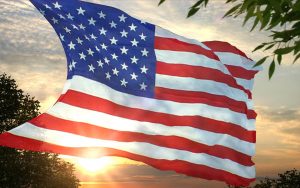In 1855, the first dirt road which is now Oberlin Rd. was established. It was part of the Cameron Plantation (I refer to plantations as concentration camps from here on out because that is what they were) which was the largest concentration camp east of the Mississippi River. Duncan Cameron (which Cameron Village was named after until last week) owned over 1,000 black slaves in 1855. At the time, Raleigh was only 5,000 people with 3,000 of them being black slaves. Duncan owned 20% of the Raleigh population in 1855.
Over the course of 200 years (1619-1820), America shipped approximately 15 million Africans to the Americas. Of those 15 million, 10% died in route (called Middle Passage) and another 20% died working in these concentration camps due to the harsh conditions, poor sanitation, poor living conditions, the myriad of medical issues that would arise and the sporadic hangings that would occur. All told approximately 4.5M Africans died at the hands of American capitalism. So, one can extrapolate that of the 1,000+ slaves Duncan Cameron owned, conservatively speaking 200 of them died during his time as a concentration camp owner.
By 1863, Lewis Peck purchased the land which is now Oberlin Rd. from Duncan Cameron. With the passage of the 13th Amendment in 1865, Lewis Peck began selling plots of land for $50 to freed black slaves. The Raleigh Cooperative Land and Building Association was critical in providing financial aid for the freed men to purchase land. Key note – none of these freed slaves ever benefitted from the original set up of America where white people got 40 acres and a mule. These black folks on Oberlin Rd. needed this association to assist them with capital.
By 1865, Oberlin Rd. was still known as New Hope Rd. A young freed black slave who served on Cameron’s land named Johnny Harris made his way to Oberlin College in Ohio. Incidentally, Oberlin College is named after a pastor who cared for black orphans in France. His care of orphans led several people in Ohio to form Oberlin College for black and white folk to attend. James Harris came back from Oberlin in 1866 and asked the City of Raleigh to name the street “Oberlin Rd.” and the community “the Oberlin Village.”
Oberlin Village became the Raleigh version of Black Wall Street in Durham. And just like Black Wall Street met its demise with the building of Highway 147, Oberlin Village met its demise with the building of Wade Ave in 1954. I digress though. From 1865-1958, over 1400 black families lived on Oberlin Rd. from Oberlin and Hillsborough all the way to Oberlin and Fairview (Anchortime AO). In this almost 100-year period, blacks became homeowners, doctors, lawyers, and teachers. The first black school (Oberlin Rd. School) was established in 1867 where Interact now sits. Wilson Temple United Methodist Church was built in 1868. And the first vocational trade college in Raleigh for black people, Latta University, was established right around the corner from Wilson Temple UMC.
This thriving black community unfortunately faced threats from the outside that eventually dismantled it. First, white people created covenants around Oberlin Rd. stating that “a negro” could not buy a home in Hayes Barton, Five Points and Cameron Park. This local land covenant stunted black growth from Oberlin Rd. In addition, with the building of Wade Ave. in 1954 and the bridge on Oberlin Rd. in 1958, this thoroughfare split the Oberlin Village community in half. The Raleigh city council explained that Wade Ave. was needed as another thoroughfare downtown traffic. A reasonable explanation for the ongoing traffic issues but completely disregarded the Oberlin Village community. This road construction displaced over 300 black families and the Oberlin Village community was cut off from each other with the bridge work. It led to hundreds more families selling their homes and moving to SE Raleigh. Eventually all of the homes (short of 10 that still exist) were sold. And in that, they were sold for pennies on the dollar because black people could not afford 2 mortgages. In 1965, a home on Oberlin Rd. was sold for $5,000. Today, a home on Oberlin Rd. would be over $1M.
With all of the families migrating from Oberlin Rd., Oberlin Rd. school was no longer needed and closed in 1967. Again, it was sold far below “fair market value” and the YWCA was built in its place which is now Interact.
The example of Oberlin Rd. gives great clarity into a local community that had real hopes, real dreams of making it in America after the 13th Amendment. But the time and the racial hatred segregated and ultimately destroyed this history. Thankfully, the North Carolina Conservation Fund has restored a few of the homes on Oberlin Rd. and seeks to educate the public on the true history of Oberlin Rd.
We get to run every Monday and Wednesday on Oberlin Rd. It is a gift. The only way we can truly be present is if we understand the past. The past in this case with Oberlin Rd. is messy and full of prejudice. It is clearly one race telling another race through laws and road building that an Oberlin Rd. Village of strength and prosperity was not wanted. Thankfully America is slowly changing but if we do not recognize the past, lay in sorrow over what was done, lament the loss and ultimately repent, we are doomed to create the same mistakes. Let us be men that are full of sorrow, lament, repent and then listen to the wisdom of black and brown people to a glorious future where all people, all people are treated as if they belong. That is moving towards the beloved community. May Oberlin Rd. teach us to move to that community.
God Bless.
HTTM
This was posted by Coco Crisp on behalf of HTTM. PAX partner chased down Oberlin to Hillsborough Street and performed 1 burpee & 5 squats each time they cross paths. 50 WW2’s at the intersection of Oberlin & Hillsborough. Native people’s run back down Oberlin with the PAX performing a series of exercises each time the 14th PAX made it to the front of the line. Exercises at Harris Teeter and on the way back, stopping to do 1 burpee, 8 squats, 6 man makers, and 6 reps of heels to heaven at each road on the left hand side. Topped off with 55 Irkins on the bridge over Wade Ave.

